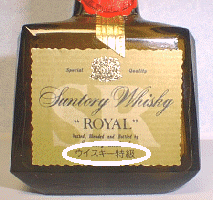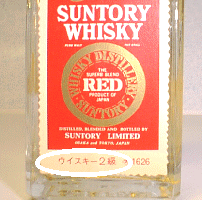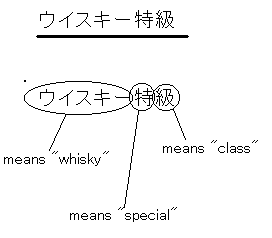


It used to be mandatory that all alcoholic drinks were classified as "Class-Special",
"Class-1" or "Class-2" by the Liquor Tax Law in Japan,
until it was abolished in 1990. ( I have not checked it out when this regulation started...
Bottles produced in early 1970's do not have this notation, so I suppose
it started in late 1970's or 1980's.)
Tax was charged depending on this classification respectively, like "800
yen for a Class-S bottle, 500 yen for a Class-1 bottle and 200 yen for
a Class-2 bottle" etc.(the yen amont here is not real). The classication
was determined by the alcohol percentage, and "Class-S" had higher
percentage, while "Class-2" had the lowest. Typically, "Class-S"
whisky contained 43%, "Class-1" 40% and "Class-2" 39%.
For example I just picked up some from Suntory items:
<Class-S>
<Class-1>
<Class-2>
Please remember that this was the domestic taxation rule, and therefore
this classification was no way stated in English on labels, but only in
Japanese.
Here I show what the notation on the labels looks like (in Japanese Characters)
: This law was of course applied to the imported liquors as well, so all
Scotches and Bourbons imported before 1990 have this notation on the "Importer's
Label", or sometimes on the main label.
 |
 |
 |
| "whisky" (no classification) bottles with this notation were produced after 1990 (or before mid 70's) | |
| "whisky class-S" bottles with this notation were produced between mid 1970's and 1990 | |
| "whisky class-1" bottles with this notation were produced between mid 1970's and 1990 | |
| "whisky class-2" bottles with this notation were produced between mid 1970's and 1990 | |